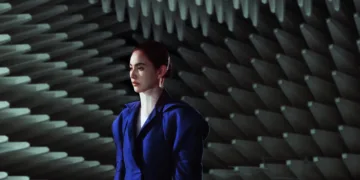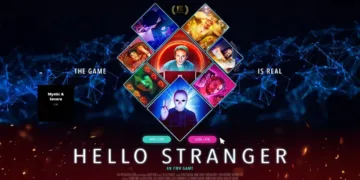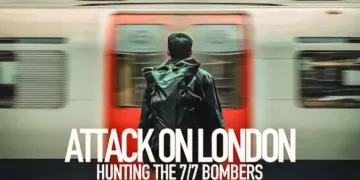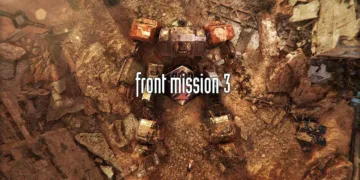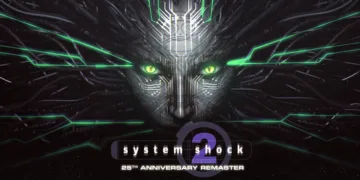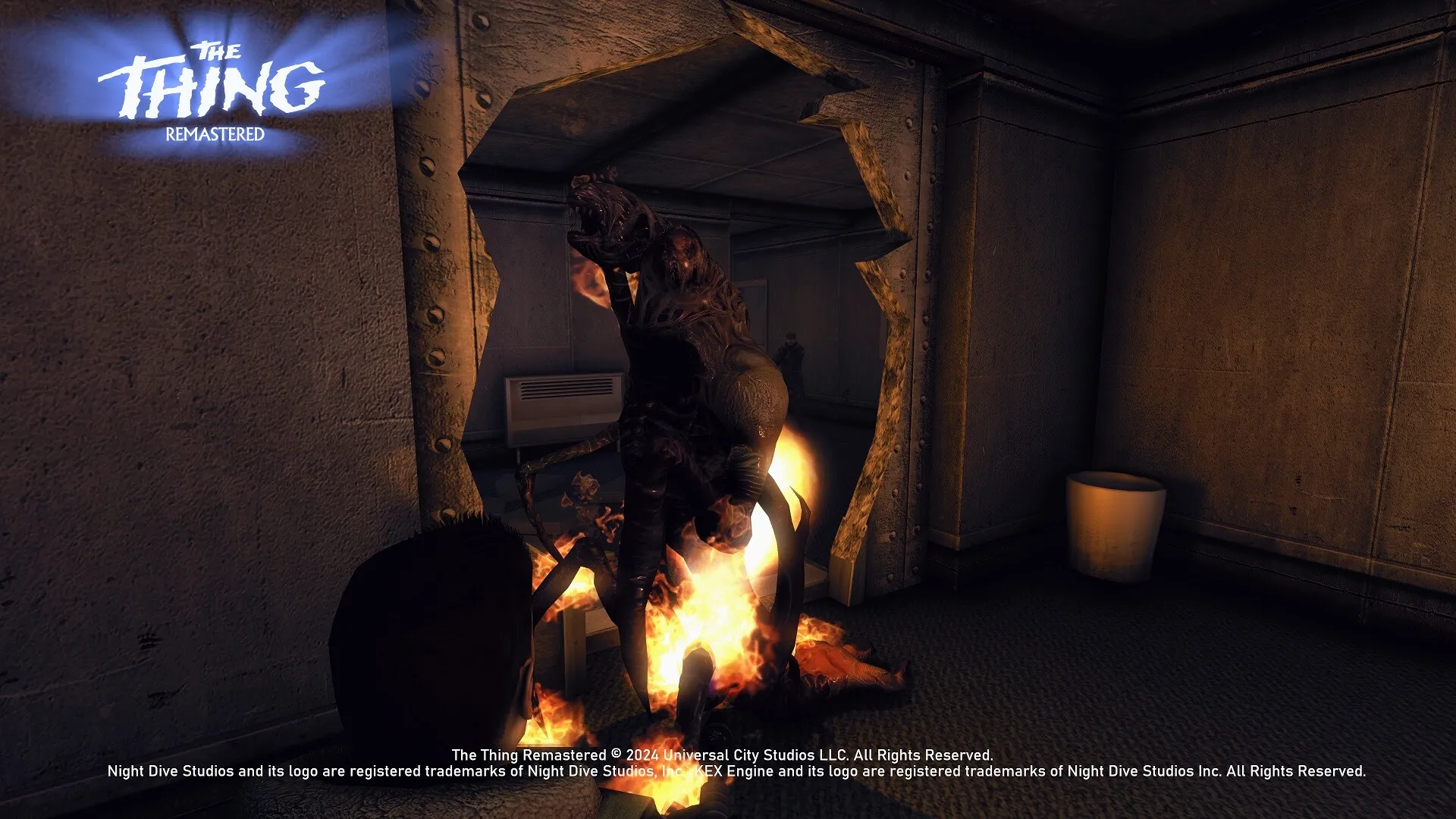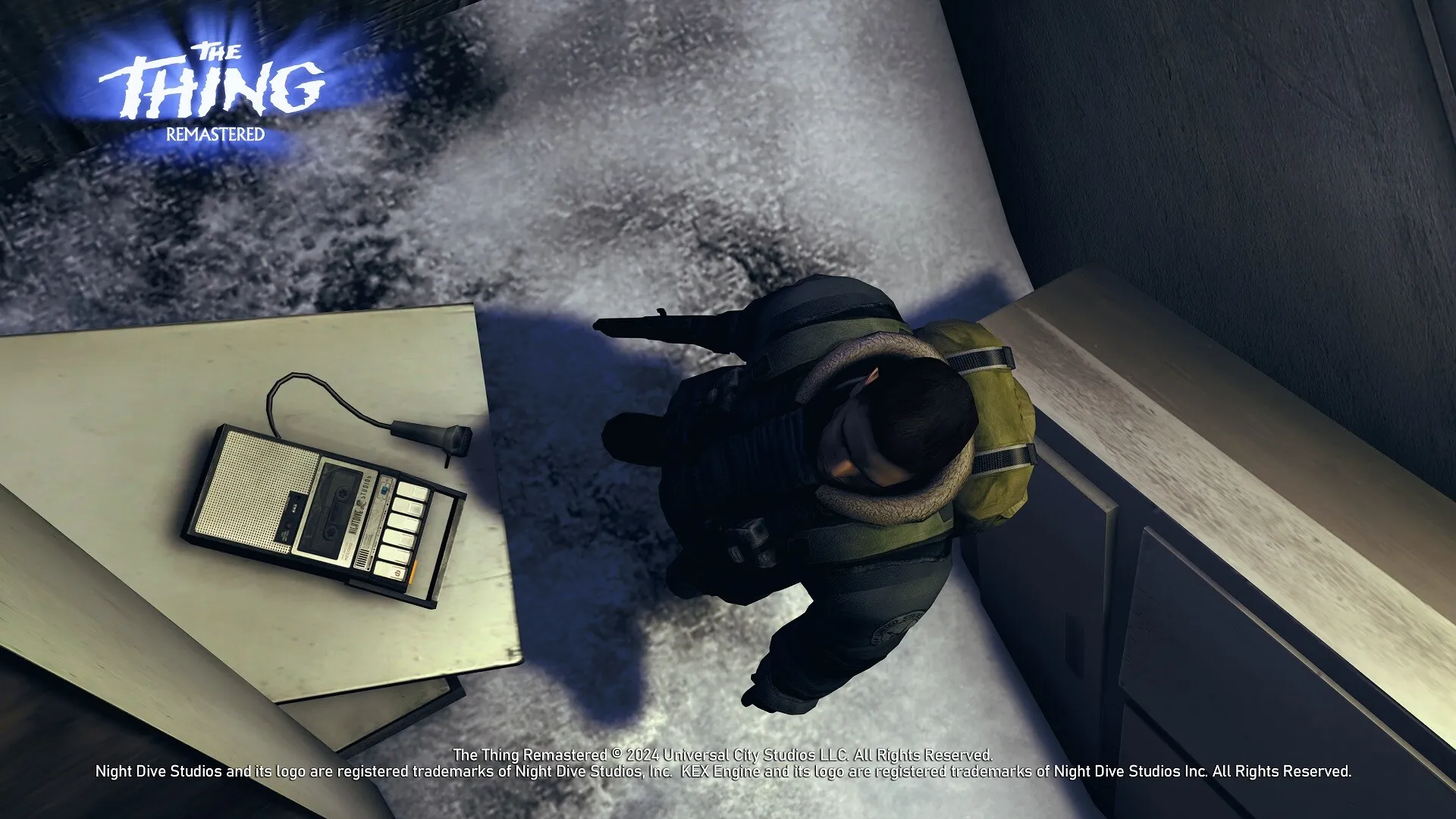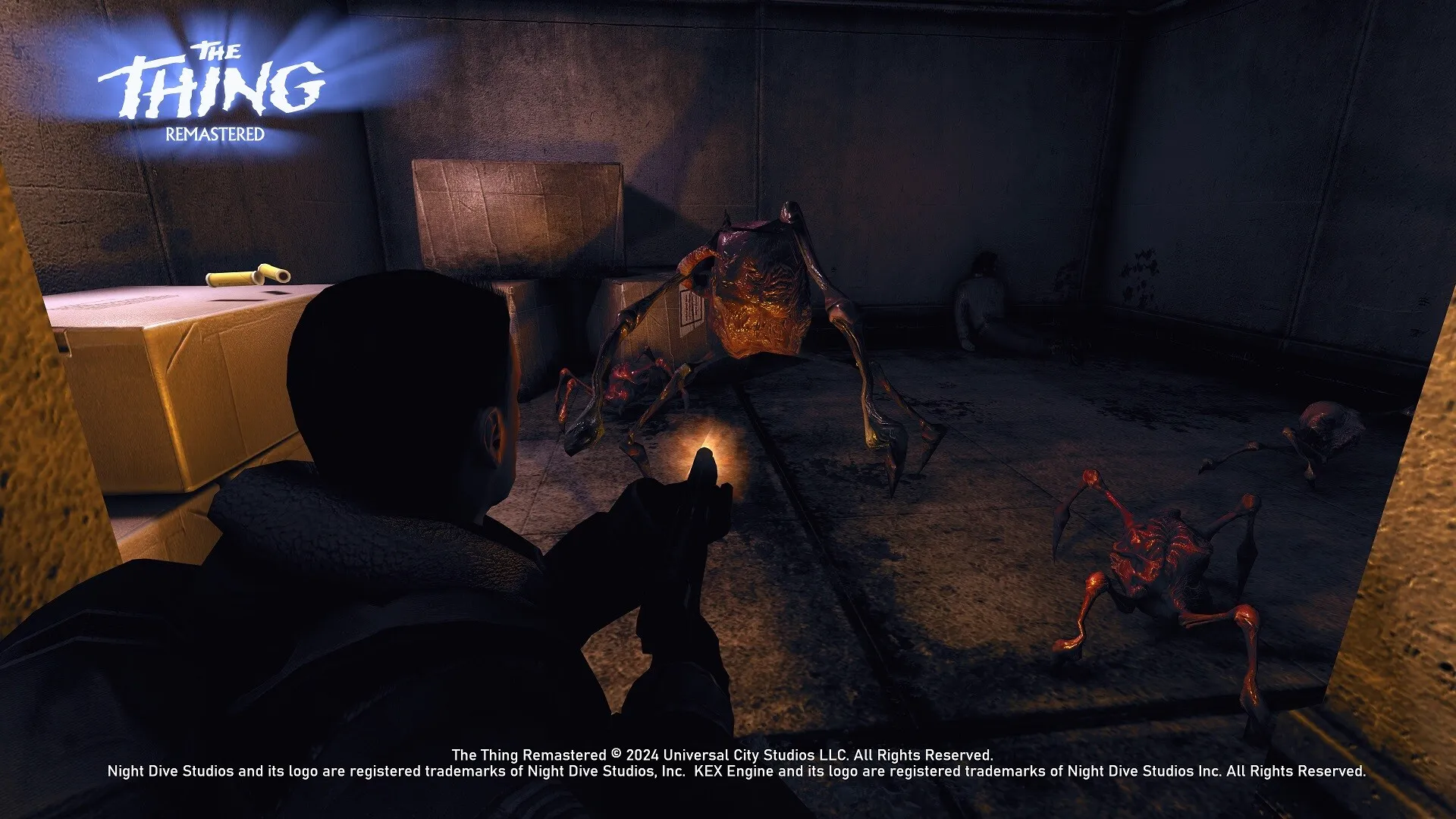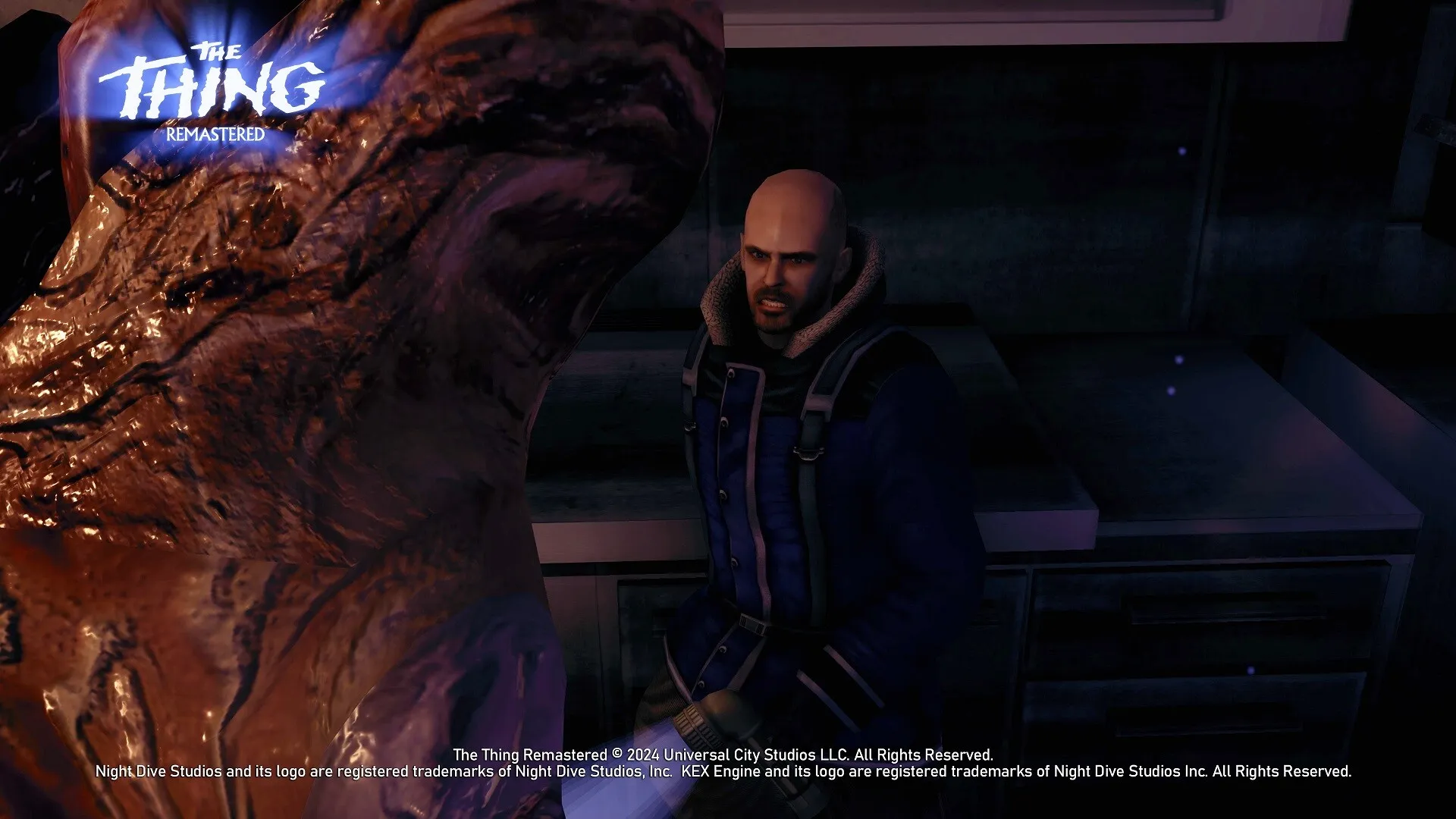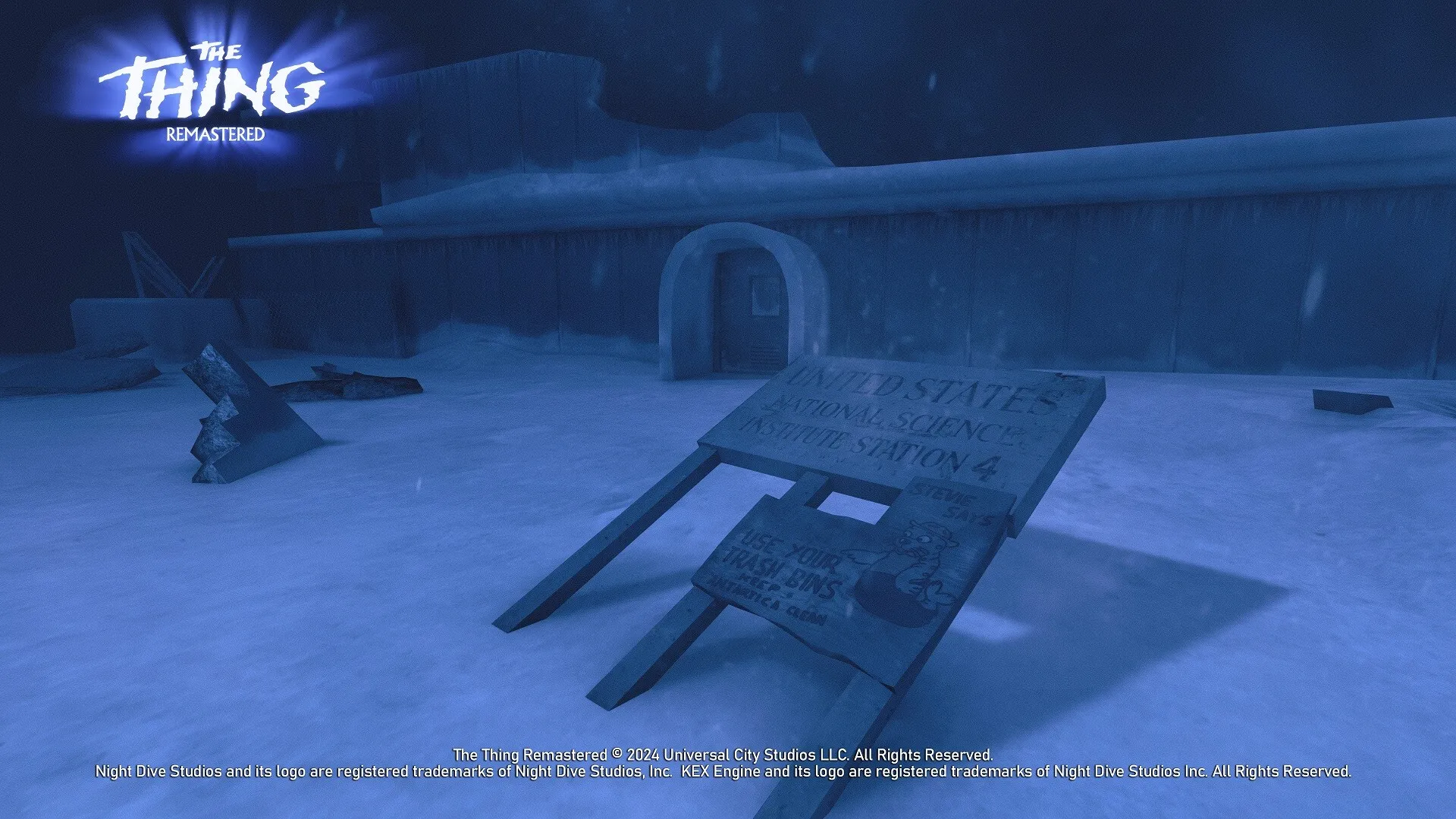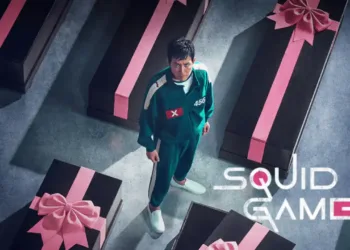The Thing: Remastered is both a nostalgic trip back to the original 1982 John Carpenter film and a new look at the famous horror series. Players take on the role of Captain J.F. Blake and lead a U.S. Special Forces team on a rescue mission to investigate the remnants of Outpost 31 in the cold, icy isolation of Antarctica.
Players are thrown into a terrifying narrative where survival depends on knowing who is friend and foe against the terrifying backdrop of an alien organism that can look like its victims. This sequel to the original film builds on the themes of paranoia and distrust.
When it came out in 2002 from Computer Artworks, The Thing quickly became a fan favorite thanks to its unique gameplay focused on trust within a squad-based structure. Now that the remaster is being done by Nightdive Studios, which is known for doing careful work on restoring games, players can look forward to a polished experience.
Even those unfamiliar with the 2002 version can enjoy the game’s rich atmosphere and engaging mechanics thanks to Nightdive’s dedication to preserving the original’s spirit while enhancing its visual fidelity, controls, and overall quality of life improvements. New graphics will bring the scary settings to life, and the gameplay will be tweaked to make it better without removing what made the original experience so memorable.
Unearthing the Horror: A Journey into Isolation
What It Is: As a direct follow-up that builds on the themes of isolation and disconnection from John Carpenter’s 1982 film, Remastered expertly weaves its narrative into its fabric. Players assume the part of Captain J.F. Blake, who leads a Special Forces team sent to investigate the strange silence around Outpost 31.
Horrors have already occurred at this abandoned research facility. This plot successfully mirrors the film’s effective tension, putting players in a scary place where everyone’s loyalty is questioned. The game starts with a sense of urgency as Blake’s team navigates the terrifying remnants of the alien entity, echoing the film’s study of paranoia and survival against an unseen threat.
The setting of Antarctica is carefully modeled, enhancing the horror aspects of the game. Nightdive Studios has done a great job of reinvigorating the cold, empty settings that make you feel a strong dread. Key places, like the ominous Norwegian camp and the darkened halls of Outpost 31, are not just backgrounds; they are essential to the narrative experience.
The ferocious winds and dim lighting create an atmosphere that keeps players on edge, reminiscent of the confined tension found in classic survival horror games like Resident Evil and Silent Hill. Every place has a past of fear that makes you want to explore while giving you a constant sense of danger. This careful attention to environmental storytelling raises the stakes, making every corner a possible place where something shocking or terrible will happen.
Survival Strategies: Navigating Trust and Combat
What It Is: The combat system in Remastered is a mix of third-person shooting mechanics and a unique set of dynamics based on fear and trust. Players fight various horrifying monsters in combat, from small, scurrying creatures to bigger, stronger monsters that require a strategic method to beat.
Despite being useful, the shooting mechanics have drawn criticism for feeling dated and echoing the clumsiness of shooters from the early 2000s. Nightdive Studios has improved the controls and shooting system, making them more responsive than the original. Players can now engage enemies with greater ease thanks to the addition of a generous lock-on feature, which is a welcome change that fits with modern gameplay standards.
Its new trust and fear mechanics work well with the remaster’s combat system and are still at the heart of the gameplay experience. Players must maintain relationships with their squadmates, who each have a specific job to do (soldier, engineer, or medic) as they navigate the dangerous environments.
Trust stakes are constantly changing in this system, adding a layer of complexity rarely seen in single-player games. Players can boost their confidence by giving their friends weapons and healing items, but there is always the chance that someone will betray them; any squad member could be an infected “Thing” hiding in plain sight.
The results of gameplay are greatly influenced by fear. Squadmates’ anxiety levels rise as they see traumatic events, which affects how they act and how effective they are in combat. For example, if a character experiences too much fear, they might freak out, refuse to do what they’re told, or even turn on Blake.
This makes every meeting unpredictable. This relationship is like the psychological tension in games like Dead Space, where the horror isn’t just outside the player’s control but also deeply connected to their relationships with friends. Through this, The Thing: Remastered successfully adds psychological horror into its core mechanics, making each choice feel important and weighty.
A Haunting Atmosphere: The Power of Sight and Sound
The Thing: Remastered shows off major improvements in its visual presentation, bringing the frozen horrors of Antarctica to life with a level of detail that exceeds the original 2002 release. Nightdive Studios has painstakingly improved character models and textures, ensuring that every grotesque change and environmental detail is presented with clarity.
The lighting has also been completely redone, with dynamic shadows and atmospheric effects that significantly increase the tension in the game. These changes make the game look better and give players a deeper experience with its spooky narrative, reminiscent of classics like Resident Evil 2 Remake. Players can now enjoy the horror elements more fully thanks to the higher visual fidelity, as a remarkably detailed backdrop now accompanies each scary scene.
In addition to the better graphics, the sound design and music make the horror experience even better. The sound has been improved, and now clear sound effects turn up the tension during gameplay. Antarctica’s howling winds and creaking structures add to a sense of unease, making travel feel dangerous. The haunting music by Ennio Morricone, which uses themes from the film to mark significant points in the game, adds to the spooky atmosphere.
The audio cues are particularly effective during encounters with the alien creatures, where unsettling sounds can warn of danger before the enemy shows up. This layered music makes the experience more immersive and keeps players on edge, reminiscent of Silent Hill’s scary sound design. The Thing: Remastered is a better experience for new players and old fans because it has better images and more interesting sound.
The Bonds of Survival: Trust and Betrayal Among Allies
In The Thing: Character growth in Remastered is closely linked to the gameplay mechanics, especially the different squad member jobs. Players can meet three types of characters: soldiers, engineers, and nurses. Each class is important for survival because it does a certain thing.
Soldiers are skilled in combat, giving the strength required to protect Earth from alien threats. Engineers must get around in dangerous environments, fix broken equipment, and open locked doors. Medics are also crucial for helping the team maintain mental and physical health. This class-based system encourages players to manage their squad carefully, ensuring a balanced team that can handle the game’s many challenges.
A layer of complexity is added to the narrative by the significant effect that player choices have on relationships with squadmates. Players must earn trust by sharing resources, engaging in combat, and making important decisions in this harsh world. For example, if a player doesn’t heal an injured squad member or give them the ammunition they need, that character’s trust drops, which could have terrible results. This dynamic is reminiscent of the relationship mechanics in Mass Effect, where different choices can result in different levels of loyalty and conflict among team members.
Trust is constantly tested during the game, especially when things are at stake, and a teammate’s loyalty may change. When players have to give blood to make sure their teammates are safe, it’s a memorable time. As the characters become more wary of each other, the tension rises, reflecting the film’s main themes of paranoia and betrayal. These interactions make character arcs more complex and raise the emotional stakes of the narrative, making every choice feel important and serious.
Tension and Release: Balancing Exploration and Action
The Thing: Remastered has a level structure that tries to balance narrative development and gameplay challenges but fails badly. The game takes place in several environments that get more difficult as you play. It starts in Outpost 31, which is very confined, and then moves on to the larger, more dangerous Norwegian camp. The effective pacing in survival horror games like Resident Evil, where early encounters set the stage for the horrors to come, is similar to this gradual escalation of tension in building suspense.
The pacing slows down in the later stages, whereas the first hours keep players interested with a captivating atmosphere and strategic squad dynamics. Notably, the game tends to drag on during some parts, with repetitive enemy encounters that can lower the initial tension.
Adding a lot of backtracking can also annoy players, especially since there isn’t a clear map system for navigation. This lack frequently leads to aimless wandering, which takes away from the immersive experience and makes players lose their way.
Additionally, there are times when it feels unfair to face enemy encounters. The initial alien threats are engaging and frightful but later encounters with human enemies get boring, taking away from the horror the game is trying to maintain.
This change in focus can make it hard for players to stay interested, making the last parts feel like a chore instead of an exciting ending. The Thing: Remastered struggles to maintain the same level of intensity throughout, which ultimately affects its overall impact, in contrast to more streamlined horror experiences like Dead Space, where the experience and enemy design are tightly interwoven.
A Nostalgic Return: Reflecting on the Remaster’s Impact
Returning players will surely enjoy The Thing: Remastered’s rich gameplay experience, bringing back memories while introducing them to archaic gameplay mechanics. For those who played the original in 2002, the remaster improves the sense of sense and tension that made the game a cult favorite.
But the gameplay shows its age in some ways, like with sluggish controls and odd pacing problems that can take away from the fun. Players are reminded why they were drawn to this game in the first place by the core elements, such as the trust dynamics among squad members and the horrifying transformation scenes, which remain engaging.
When it comes to the remaster’s strengths, the better graphics, sound design, and complex relationship interactions really stand out. However, the game has problems with boring enemy encounters and tricky navigation that may annoy players, especially those new to the series.
For fans of Carpenter’s film, The Thing: Remastered is a satisfying experience that transports them back to a special time and place. For those willing to navigate its quirks, the learning curve might be steep for newcomers, but the atmospheric horror and tense gameplay make it worth the money.
The Review
The Thing: Remastered
Through enhanced graphics, atmospheric sound design, and engaging character dynamics, The Thing: Remastered successfully captures the spooky spirit of Carpenter's film. However, despite the abundance of nostalgia and tension, older mechanics and pacing problems can make the experience less enjoyable, especially for first-timers. Ultimately, this remake is a great way for fans to play the game again, but those unfamiliar with its quirks might find it annoying.
PROS
- Enhanced graphics and lighting improve immersion.
- Strong sound design contributes to a tense atmosphere.
- Engaging character dynamics and trust mechanics.
- Nostalgic appeal for fans of the original game and film.
CONS
- Outdated controls and clunky mechanics can frustrate players.
- Pacing issues, especially in later levels.
- Repetitive enemy encounters detract from tension.
- Navigation can be confusing without a clear map.




















